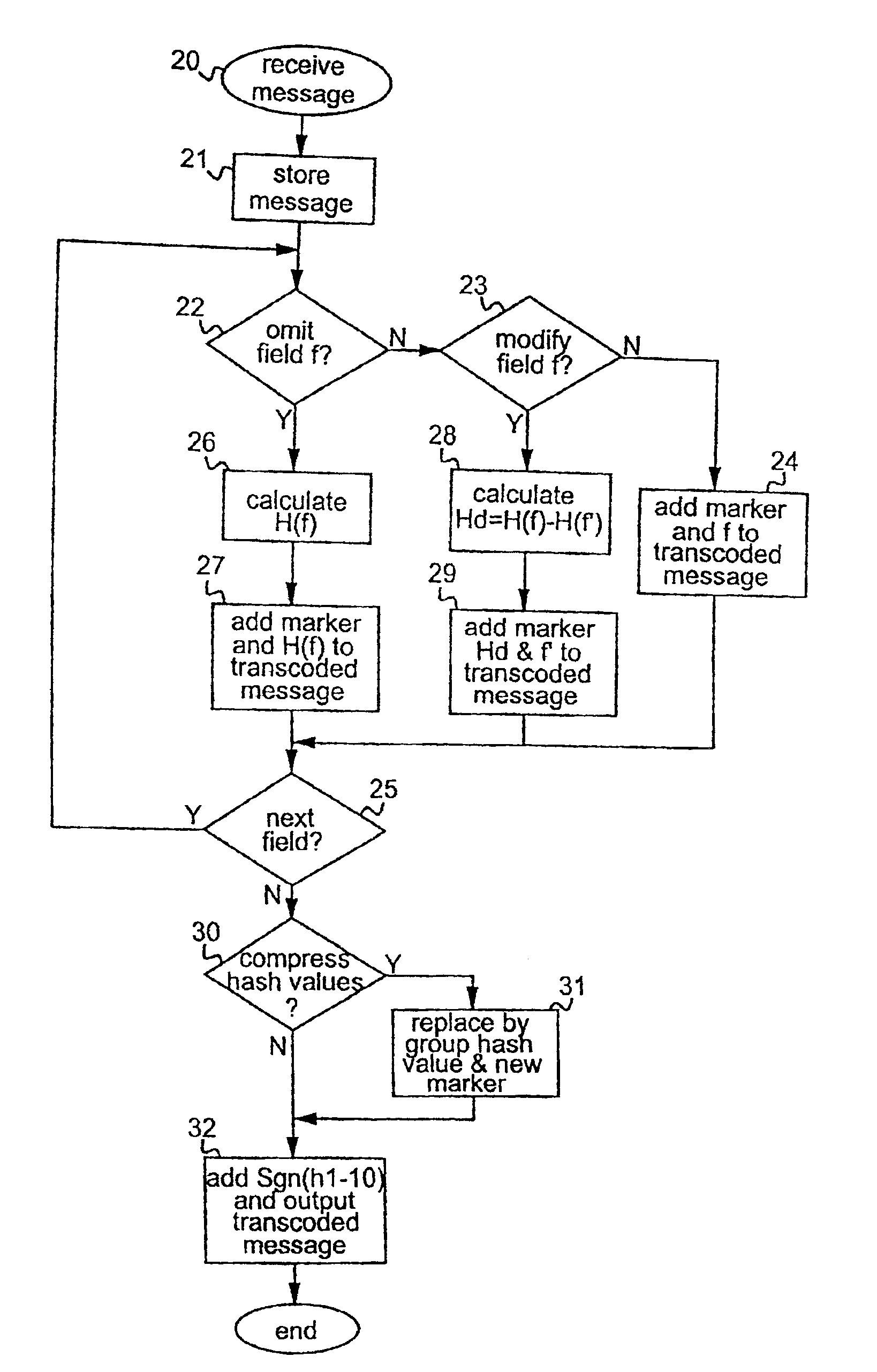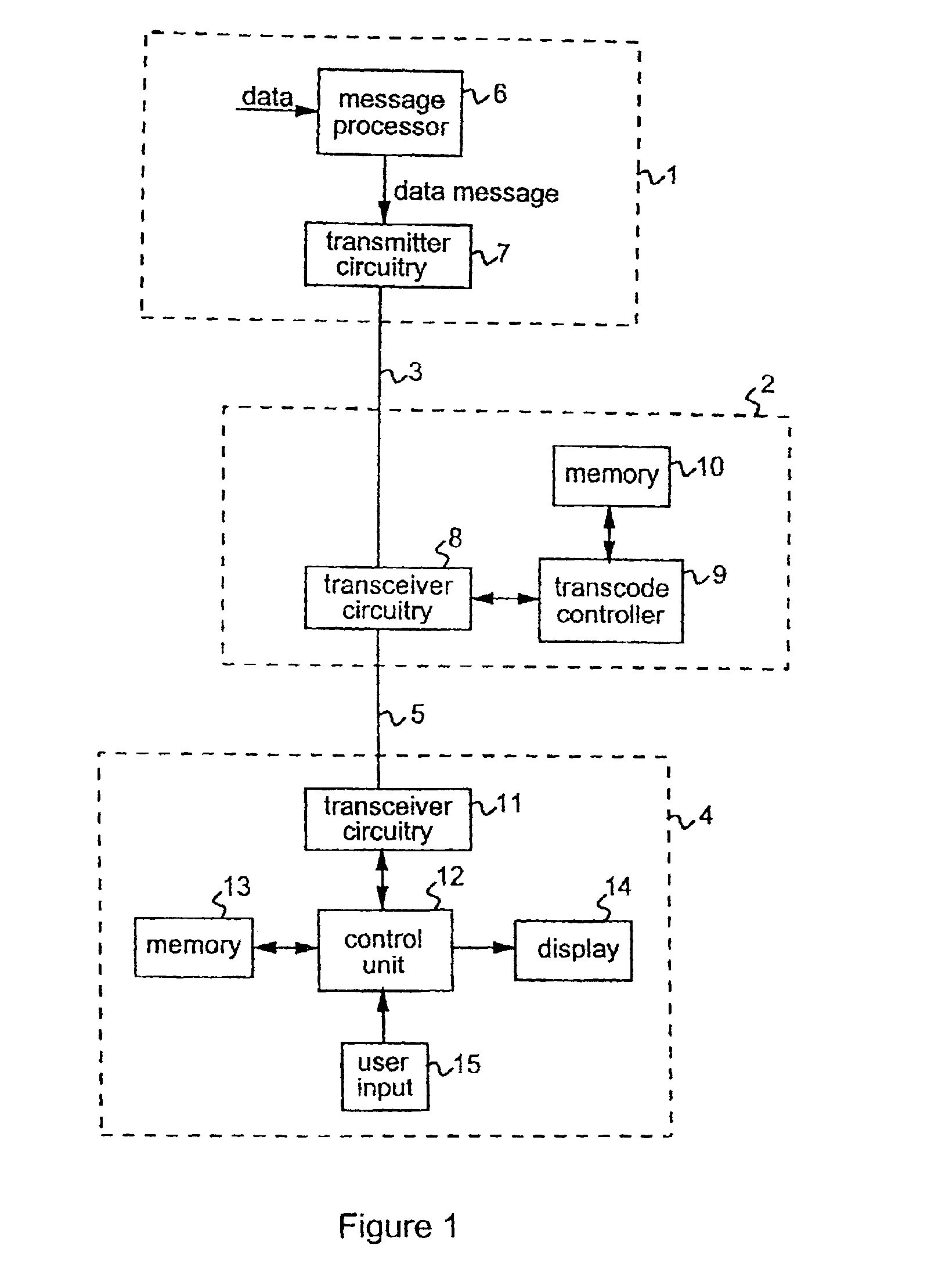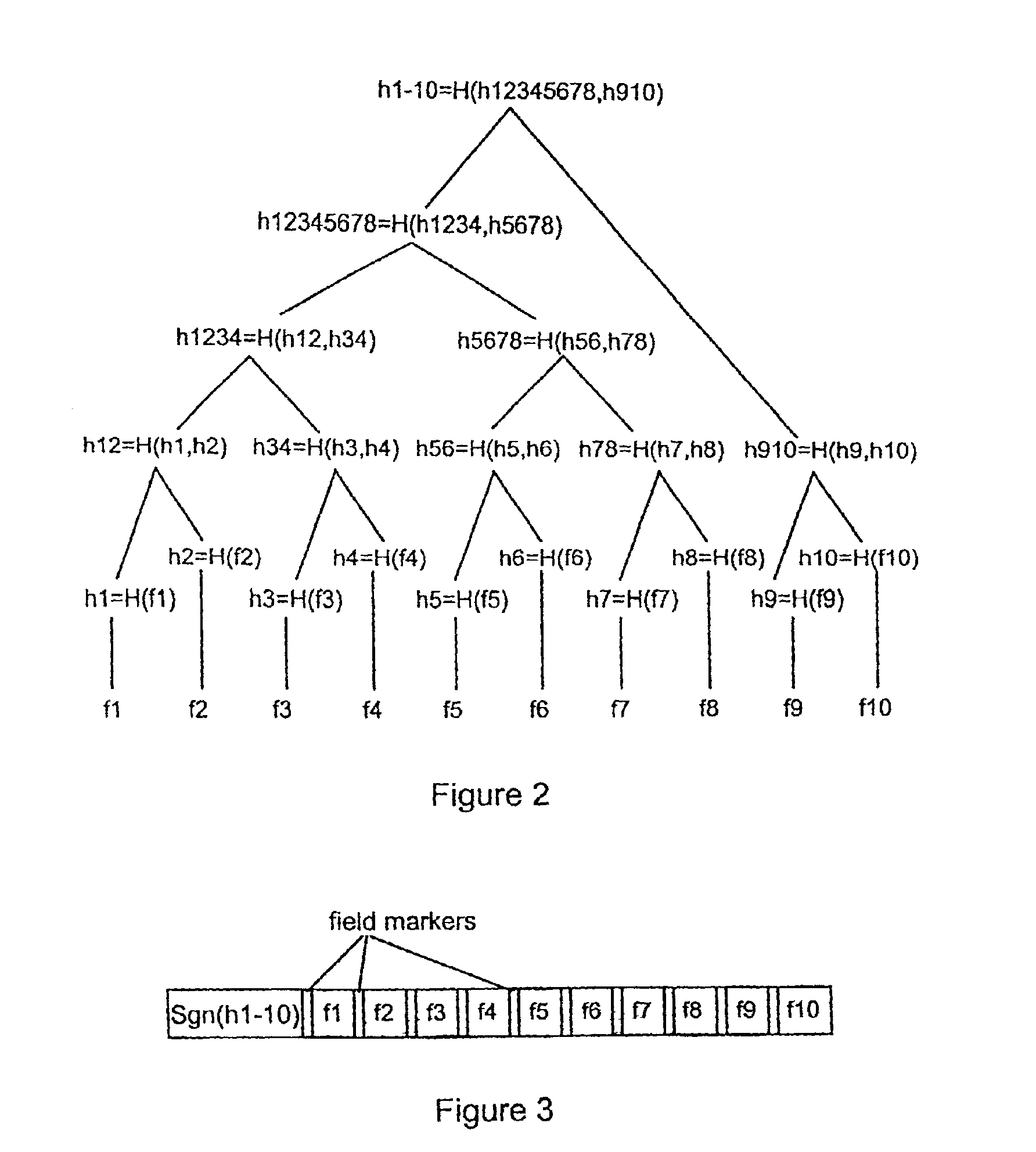Transcoding in data communications
a data communication and transcoding technology, applied in the field of transcoding in data communication systems, can solve the problems of slow communication links, large data processing capacity expectations of the recipient device, and difficulty in providing general purpose access to centralized processing and database systems
- Summary
- Abstract
- Description
- Claims
- Application Information
AI Technical Summary
Benefits of technology
Problems solved by technology
Method used
Image
Examples
Embodiment Construction
[0051]FIG. 1 shows the main elements of a data delivery chain in a data communication system embodying the invention. As illustrated, the system includes a source device 1 which can communicate with a transcoder 2 via link 3. The source device 1 may be a server for a centralized processing or database system, for example a network server or an Internet server, and link 3 may be a hard-wired or a wireless link as appropriate. The transcoder 2 can communicate with a destination device 4 via link 5. The destination device 4 may be, for example, a portable device such as a hand-held computing device, pager or mobile phone, and may be one of a number of such devices with which the transcoder can communicate. The link 5 may again be a hard-wired or wireless link as appropriate depending on the nature of destination device 4.
[0052]The elements of the source device 1, transcoder 2 and destination device 4 involved in operation of the data communication method to be described below are illus...
PUM
 Login to View More
Login to View More Abstract
Description
Claims
Application Information
 Login to View More
Login to View More - R&D
- Intellectual Property
- Life Sciences
- Materials
- Tech Scout
- Unparalleled Data Quality
- Higher Quality Content
- 60% Fewer Hallucinations
Browse by: Latest US Patents, China's latest patents, Technical Efficacy Thesaurus, Application Domain, Technology Topic, Popular Technical Reports.
© 2025 PatSnap. All rights reserved.Legal|Privacy policy|Modern Slavery Act Transparency Statement|Sitemap|About US| Contact US: help@patsnap.com



